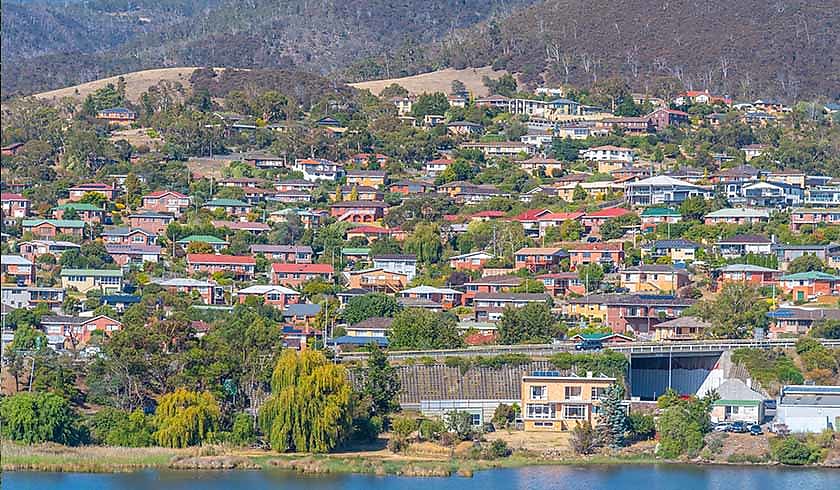Tasmania’s property market conditions ‘resets’ to pre-pandemic levels
While a state body declared that Tasmania’s real estate market activity has now reset to pre-pandemic levels, it highlighted that a “new set of norms” has also emerged.

The Real Estate Institute of Tasmania’s annual data, released alongside its December quarter report, showed that property transactions in the state fell from 12,107 in 2021 to 9,848 in 2022, representing an 18.9 per cent annual decline in the figures.
Despite the steep drop in sales, data also showed that the state recorded over $5 billion worth of property sales for only the second time on record.
Across the state, house sales were down 16.7 per cent with median prices growing 18.5 per cent to $616,000.
The same trend was observed in the unit sector, where sales were down 16.7 per cent but prices rose 13.4 per cent to $490,000.
Similarly, land sales fell 31.3 per cent during the period, while prices increased 21.4 per cent to $255,000.
Across the regions, the trend of declining sales volumes while the average house prices increased to record highs was also seen.
Greater Hobart sales fell 11.7 per cent last year, while the median house price pushed up 12.9 per cent to $790,000.
In Launceston, house sales fell 14.6 per cent with prices growing to $579,000 (up 17.9 per cent). The North West centres also reached a median house price of $466,000 (up 16.8 per cent) with 22.8 per cent less sales.
REIT president Michael Walsh said the region’s property market had “moved on from the heights of the past three years”.
“We have returned to the levels of activity which occurred in the pre-COVID-19 era. It has established a new set of norms which have seen the market transition from sellers dictating their terms of sale to a much more balanced market,” he stated.
With that, the executive said that the state institute expected to see “less transactions in 2022 than 2021.”
The report highlighted that increasing interest rates have reduced the buying capacity for a lot of buyers, particularly first home buyers, whose numbers decreased 15.6 per cent over the year.
Meanwhile, investor numbers also receded by 33.1 per cent. Following a total of 2,329 investment transactions in 2021, data showed that 2022 recorded just 1,558. However, the median acquisition price was $454,000 up $54,000 last year.
Another trend that emerged is “mainland invasion”, which appears to have slowed with interstate purchases decreasing by 27.1 per cent annually from 2,109 to 1,538.
Local Tasmanian buyers drove sales in excess of $1 million to new record highs, representing 81.5 per cent of the other half of sales transactions. In 2021, the state set a record for $1 million-plus sales (788), but in 2022, it continued to rise to 943.
Rental demand continues to outstrip supply, resulting in the vacancy rates in all regions decreasing to near-record lows, pushing rents up in most areas. The number of available rental listings in the state declined from 1.3 per cent to 1 per cent over the year.
This decline in supply pushed rents higher by 15.5 per cent to $560 per week in greater Hobart, by 12.55 per cent to $450 in Launceston and by 11.8 per cent to $380 in the North West.
In terms of demand, the latest quarterly report highlighted that properties are now taking longer to sell. The average days on market have doubled in Hobart over the past year to 26 days. Launceston has increased from 17 to 29 days and the North West from 22 to 33.
With properties staying on the market for a longer period of time, Mr Walsh said there has been an increase in the number of available listings. “We are seeing buyers taking a more cautious approach,” he said.
“However, some areas are still experiencing a stock shortage and our prices haven’t been as drastically affected as our mainland counterparts.
Mr Walsh acknowledged that the decline in investor participation, along with further interest rate increases and rising building costs, are “certainly going to impact” the region’s market further.
“The need to address a growing shortage of rental properties and a rapid decrease in investor participation is fast becoming a priority for all to address.
“We desperately need more rental property across all parts of the state, but we can’t rely just on private investment to fill the gap. Unless there is growth in this sector, demand will continue to push rents higher,” he noted.
While Mr Walsh expressed his confidence that the Tasmanian real estate market is “well positioned to weather the storm and minimise any fallout from rising interest rates”, he said that the “need to address a growing shortage of rental properties and a rapid decrease in investor participation” is fast becoming a priority.
